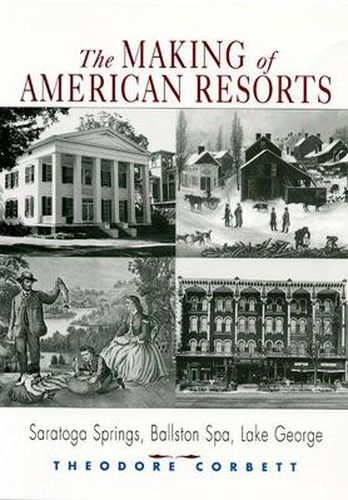Readings Newsletter
Become a Readings Member to make your shopping experience even easier.
Sign in or sign up for free!
You’re not far away from qualifying for FREE standard shipping within Australia
You’ve qualified for FREE standard shipping within Australia
The cart is loading…






What factors create a successful resort? How did the rise of lavish hotels and spas reflect the changing values of American society as the nineteenth century progressed? Historians have argued that resorts were created to meet the demands of a leisured social elite. Theodore Corbett offers a fresh, compelling argument, demonstrating that resorts created and re-created themselves to keep pace with changing times. Success came with anticipating demands, not just reacting to them.Using an impressive variety of historical documents, Corbett focuses on the conditions underlying the rise-and the demise-of the resorts at Ballston Spa and Caldwell on Lake George. Both towns’ major landlord-developers saw tourism as only one vehicle that could lead to success. As a result of their divided policies, neither town invested in the proper infrastructure to make tourism an immediate succes. Both places were soon overshadowed by Saratoga Springs, which became the premier resort of the upper and middle class.Due to complex interwoven influences, Saratoga Springs was able to supply the amenities needed to attract and retain the patronage of the well heeled. The town provided visitors with lavish hotels, parks, public squares, pleasure gardens, and convenient service alleys. Saratoga Springs also had a work force that was available for the five-month period per year that the spas were active. Corbett examines the history and participation of various ethnic groups in the resort’s service sector: African Americans, Irish, and Native Americans.Corbett also stresses middle-class America’s emulation of the leisure habits of the English aristocracy. Even though these pursuits (hunting, fishing, horse racrting) were dominaterd by men, social rituals were dominated by women, and resorts that accommodated
public domesticity thrived as the century progressed.The Making of American Resortsoffers a window into shifting public values and the structure of commercial tourism.
$9.00 standard shipping within Australia
FREE standard shipping within Australia for orders over $100.00
Express & International shipping calculated at checkout
What factors create a successful resort? How did the rise of lavish hotels and spas reflect the changing values of American society as the nineteenth century progressed? Historians have argued that resorts were created to meet the demands of a leisured social elite. Theodore Corbett offers a fresh, compelling argument, demonstrating that resorts created and re-created themselves to keep pace with changing times. Success came with anticipating demands, not just reacting to them.Using an impressive variety of historical documents, Corbett focuses on the conditions underlying the rise-and the demise-of the resorts at Ballston Spa and Caldwell on Lake George. Both towns’ major landlord-developers saw tourism as only one vehicle that could lead to success. As a result of their divided policies, neither town invested in the proper infrastructure to make tourism an immediate succes. Both places were soon overshadowed by Saratoga Springs, which became the premier resort of the upper and middle class.Due to complex interwoven influences, Saratoga Springs was able to supply the amenities needed to attract and retain the patronage of the well heeled. The town provided visitors with lavish hotels, parks, public squares, pleasure gardens, and convenient service alleys. Saratoga Springs also had a work force that was available for the five-month period per year that the spas were active. Corbett examines the history and participation of various ethnic groups in the resort’s service sector: African Americans, Irish, and Native Americans.Corbett also stresses middle-class America’s emulation of the leisure habits of the English aristocracy. Even though these pursuits (hunting, fishing, horse racrting) were dominaterd by men, social rituals were dominated by women, and resorts that accommodated
public domesticity thrived as the century progressed.The Making of American Resortsoffers a window into shifting public values and the structure of commercial tourism.